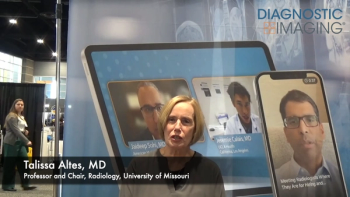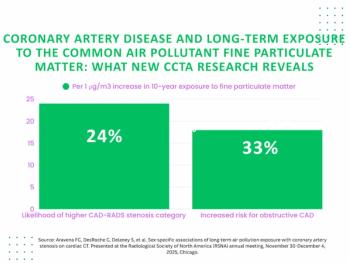
Studies at 9.4T explore safety issues for lower fields
The first human brain images done at the University of Minnesota’s 9.4T MR scanner are yielding impressive results, according to J. Thomas Vaughan Jr., Ph.D., who administers the Engineering Core of the Center for Magnetic Resonance Research at the U of M.
The first human brain images done at the University of Minnesota's 9.4T MR scanner are yielding impressive results, according to J. Thomas Vaughan Jr., Ph.D., who administers the Engineering Core of the Center for Magnetic Resonance Research at the U of M.
"We are seeing veins at a level not seen before," Vaughan said during a presentation at last week's International Society for Magnetic Resonance in Medicine meeting. "But all I want to say for this year is, it looks like 9.4T human head imaging is feasible."
Vaughan has good reason for being cautious. Pushing human ultrahigh-field MR imaging to 9.4T carries certain risks not found at lower fields, especially when imaging the head. The high water content of the brain and the resultant high conductivity set the stage for potentially dangerous localized heating of tissue. This may occur due to a phenomenon called constructive interference. The relatively short 9-cm radiofrequency wavelengths can overlap, creating waves of markedly higher amplitude that produce "hot spots" due to tissue attenuation of those waves.
Animal and, in the future, human studies planned at 9.4T will help define these issues, not only at this ultrahigh field strength but possibly at 7T as well. Such definitions may be particularly important in light of an increasing and unexpected interest among clinical research sites in purchasing and operating 7T systems (DI SCAN 5/12/06,
The lack of experience at 7T raises the possibility that subtle problems due to localized heating may occur under certain conditions, according to Vaughan. Current safety limits, defined by specific absorption rate (SAR) values, are based on power deposition over a relatively large area. Vaughan is concerned that, even though SAR might remain within limits considered safe, energy may "pile up" at one or more points, particularly in the brain.
"Temperature is the real issue, not SAR. That is why we are modeling and measuring localized temperatures," he said. "There are very few safety data at 7T and 9.4T. We all have to be very careful."
Vaughan, who operates several MR scanners, including one at 7T, believes that safety studies done at 9.4T might identify concerns that need to be examined at lower, although still very high, field strengths.
"One argument for doing (ultra) high field studies is that they make these issues easier to observe and understand, so they can be applied backwards to all field strengths," he said.
Prior to the human neuro studies on the U of M's 9.4T scanner, begun earlier this year, Vaughan and colleagues conducted preliminary safety studies on human-sized pigs, measuring localized temperatures in the brains of anesthesized animals using fluoro-optic thermometry. In the coming months and years, the researchers will correlate exact temperatures with MR thermometry in pigs, benchmarking those data so as to translate findings to human MR thermometry readings.
"As we go to higher field strengths, and we need more power to do imaging studies, we have to consider the effects of constructive interference," Vaughan said. "We have to understand it. Not just for safety but for imaging. In the 9.4T system, we have a tool with which we can easily observe and measure this phenomenon."
Newsletter
Stay at the forefront of radiology with the Diagnostic Imaging newsletter, delivering the latest news, clinical insights, and imaging advancements for today’s radiologists.




























